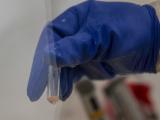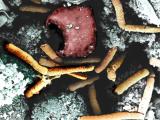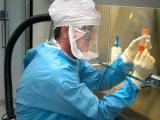Sep 4, 2003 (CIDRAP News) A new study on anthrax in mice indicates that the organism kills its victims by a different mechanism than previously believed, a finding that could change the approach to drug development for anthrax.
The study, by researchers with the National Institutes of Health (NIH), contradicts the previous belief that anthrax lethal toxin (LT) kills its host by causing the immune system to release a flood of proteins called cytokines, leading to septic shock. Instead, the researchers found that the toxin causes extensive tissue hypoxia, liver damage, and pleural edema. The study appears in the September issue of Journal of Clinical Investigation.
Stephen Leppla, PhD, senior author of the study, said the findings should change approaches to the design of anthrax drugs, according to an NIH news release. "The evidence suggests that current efforts to design cytokine-suppressing drugs to treat lethal toxinmediated events in late stages of anthrax may be misguided," the release states.
Leppla and his colleagues injected hundreds of inbred mice with LT and then took carefully timed measurements to assess how various organs and immune system processes responded, according to the NIH. The researchers found "no evidence of a persistent increase in cytokines, or of a link between cytokine increase and anthrax LT effects, contradicting earlier beliefs."
In a commentary accompanying the research report, Alice S. Prince of Columbia University College of Physicians and Surgeons writes, "The most prominent pathology associated with anthrax lethal toxin was extensive tissue necrosis and hypoxic damage in the liver, spleen, and bone marrow." There was no evidence of widespread blood coagulation or kidney failure, which are the typical results of "enotoxin-mediated shock," she adds.
Leppla, in the NIH release, said science has a good understanding of how anthrax toxins work at the molecular and subcellular levels but not of how the toxins affect tissues and animal models. "Ours is one of the first comprehensive studies to critically examine what is actually happening at these higher levels of complexity," he said.
Prince said further studies are needed to determine exactly how LT causes tissue hypoxia, what metabolic processes are affected in the liver and elsewhere, and how these effects may be blocked.
Moayeri M, Haines D, Young HA, et al. Bacillus anthracis lethal toxin induces TNF-alphaindependent hypoxia-mediated toxicity in mice. J Clin Invest 2003;112(5):670-82 [Full text]
Prince AS. The host response to anthrax lethal toxin: unexpected observations. J Clin Invest 2003;112(5):656-8 [Full text]
See also:
NIAID news release
http://www.nih.gov/news/pr/sep2003/niaid-02.htm


















